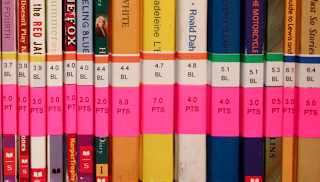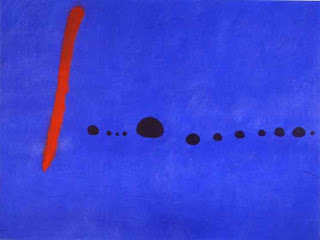Accelerated Readers (AR) = Arbitrary Ridiculousness
Being a book person -- a person who LOVES books -- I've been curious about this Accelerated Reader program that gives books number values (YEP ... ALL sorts of books, even mine). After a student reads my novel, they get to take a lovely quiz about it. (Yippeee!! The joy of reading all summed up in a ten-question, multiple-choice quiz just to make sure you finished that book, every single page.)
That's exactly why I write.
Well, according to Renaissance Learning's tried and true system, literacy is promoted by answering multiple choice questions. That's the best way to get kids involved in reading, right? Students don't necessarily even have to think about the books they've read, not in any significant way. I'll give them this much: it's an effective way to teach kids to recall pretty lame facts about novels without actually having to think about them.
Why do I say this? I took my Freeze Frame quiz and got an answer wrong. This could be because I hadn't had my coffee yet. Maybe it's because I wrote Freeze Frame over five years ago, and I forgot the whole thing. I think it's more likely that the questions generated by this brilliant reading campaign are completely irrelevant. Like, totally.
All AR books are coded three ways (this is taken from the FAQ from Renaissance Learning):
Interest level (IL) refers to the sophistication of a book’s content, ideas, and theme and is based on publisher recommendations. You would use the interest level to determine if a child should read the book.
LG=lower grades, approximately K-3
MG=middle grades, approximately 4-8
UG=upper grades, approximately 9-12
Book Levels (BL) are based on an ATOS readability scale developed by Renaissance Learning. The full-text of the book is scanned into a computer and the difficulty of the words is analyzed. The book level is a measure of the difficulty of the text and helps predict which books students can understand.
Points are based on both the length and the difficulty of the book. Therefore, the longer and harder the book is, the more points it is worth. Some schools use points as an incentive program.

Ergo, that means if, as an author, I use bigger words and writer a longer book, my book is "worth more." And for readers, this is the perfect way to celebrate the wonder of the written word. Naturally, this is an incentive because reading is all about the points. I do know that my niece won't read "under" her AR level. (My books don't make the cut; the numbers are too low.)
So I checked on my novels, a little depressed about my low numbers and found that Freeze Frame, Compromised, and Compulsion and are worth 9, 11, and 8 points respectively. Out of curiosity, I went to see the AR levels of some of my favorite books on the planet, books I'd love for my daughters to read one day, books whose ideas transcend time.
The Pearl, John Steinbeck: 4
Going Bovine, Libba Bray: 17
The Heart of Darkness , Joseph Conrad: 10
Feed, MT Anderson: 7
The Absolutely True Diary of a Part Time Indian, Sherman Alexie: 6
Speak, Laurie Halse Anderson: 7
The Book Thief , Marcus Zusack: 18
Burned, Ellen Hopkins: not found (meaning no AR points for her)
Junie B Jones, Barbara Park: 1
American Born Chinese, Gene Luen Yang: 1
This is ... confusing. American Born Chinese has a MG rating with a BL of 3.3. Junie B Jones has a LG rating with a BL 2.7. So does this mean an advanced 3rd Grader, Junie B Jones fan, could read, comprehend, and appreciate the ideas presented in American Born Chinese since they've been given almost the same rating? And, by that token, an 8th grader could read Junie B and argue it's a valid reading choice considering ABC has the same rating?
American Born Chinese was the first graphic novel to win the Printz award (awarded by the American Library Association) and was short-listed for the National Book Award. It's holy shitballs amazing. (I'm sure I'd get nicked on my AR score for such an unsophisticated phrase), but if a kid has to read 18 AR points, she's not going to pick up American Born Chinese because it's maybe considered "light."
In the same vein, my novel, Compromised is a UG, BL 3.3, AR 11 while Joseph Conrad's masterpiece The Heart of Darkness is a UG, BL 9, AR 10 (since it's such a light read and so easy to grasp).
From what I understand, teachers who do this program with students require students to get a number of points per quarter, semester, year ... whatever. This can be done by taking the square root of the BL, dividing it by the AR multiplying it by the number of pages per each book and number of words that have more than three syllables, then adding the number of right multiple choice answers students get and do the hokey-pokey.
So I'm disgruntled. Go to the source, I think and search the masterminds behind AR. This is their mission statement:
Our primary purpose is to accelerate learning for all children and adults of all ability levels and ethnic and social backgrounds, worldwide.
Um. Why?
What's the big hurry?
Have we ever considered that kids don't focus and don't take their time and don't spend the time they need on a problem, a book, a difficult science question simply because we live in an accelerated world? What would happen if, for example, we gave kids time to reflect, to ingest new ideas and respond to them? (I think that would be called "education"). Even crazier: What would happen if we didn't assign number values to books, allowed kids to explore books at their own pace, encouraged them to read everything from picture books to graphic novels, comics to historical fiction? Is that so radical?
This Renaissance Learning Company has succeeded in finding a very tidy way of approaching literacy. Businesses have clear goals and quantifiable outcomes. Education, though, the real stuff, is MESSY. Ideas are messy. Ideas can't be shaded in with a pencil on a multiple-choice test. I'd argue that the ideas and depth in novels written by MT Anderson, Sherman Alexie, Laurie Halse Anderson (I could go on and on and on) can't be measured by numbers, can't be given a set value.
I know teachers are in a bind, trying to promote literacy, challenge students, and answer to the Great Powers That Be (Though I don't know who those great powers are, I imagine they wield a pretty heavy sword and can cut jobs like what's-his-name decapitated people in the French revolution. You know who I'm talking about. Yes, I did read Jennifer Donnelley's Revolution but was spared the AR test, hence don't remember the name of what's-his-name.) But I wonder how a number system can promote literacy.
There are other ways to create readers. In fact, I'd argue, this system truncates more than feeds. It's the perfect way to kill the simple joy of reading. It shuts more doors than opens. It creates a kind of perverse book social status rating system. And, at the end of the day, it teaches kids that numbers matter more than content. It's just another extension of how we think in our society. The numbers game pervades every part of our culture; it pushes young people into careers based on projected salary instead of projected joy; it makes sure everyone has the newest and best sound system; it makes winning at all costs the expectation, not the exception. (Ask Lance Armstrong about this attitude and how that worked out for him.)
Einstein had this hanging on his office door (and from what I understand, he was a pretty smart guy): Not everything that counts can be counted, and not everything that can be counted counts.
It's not fair. It's not fair to take novels and turn them into numbers. It's not fair to our students -- students who should be working to develop critical thinking skills, reading books because they inspire them, not reading to get the points they need. And honestly, it makes absolutely no sense. It's cheap. It's easy. And it depresses the hell out of me.
Alas, what to do?
I suppose since I can't fight the masses, I might as well join them. I'm thinking of setting up my own number system. Since we're assigning random number values to people's life's work, why not teach art the same way? We could give Jackson Pollock's Drip Period a 48, maybe 50; Picasso's Guernica is definitely a 32; the Sistine Chapel's got to be off the charts. I mean, he did paint it laying on his back, right? But Miro's probably a 1 or 2 since he drew like a kid.

Published on February 01, 2013 06:27
No comments have been added yet.



